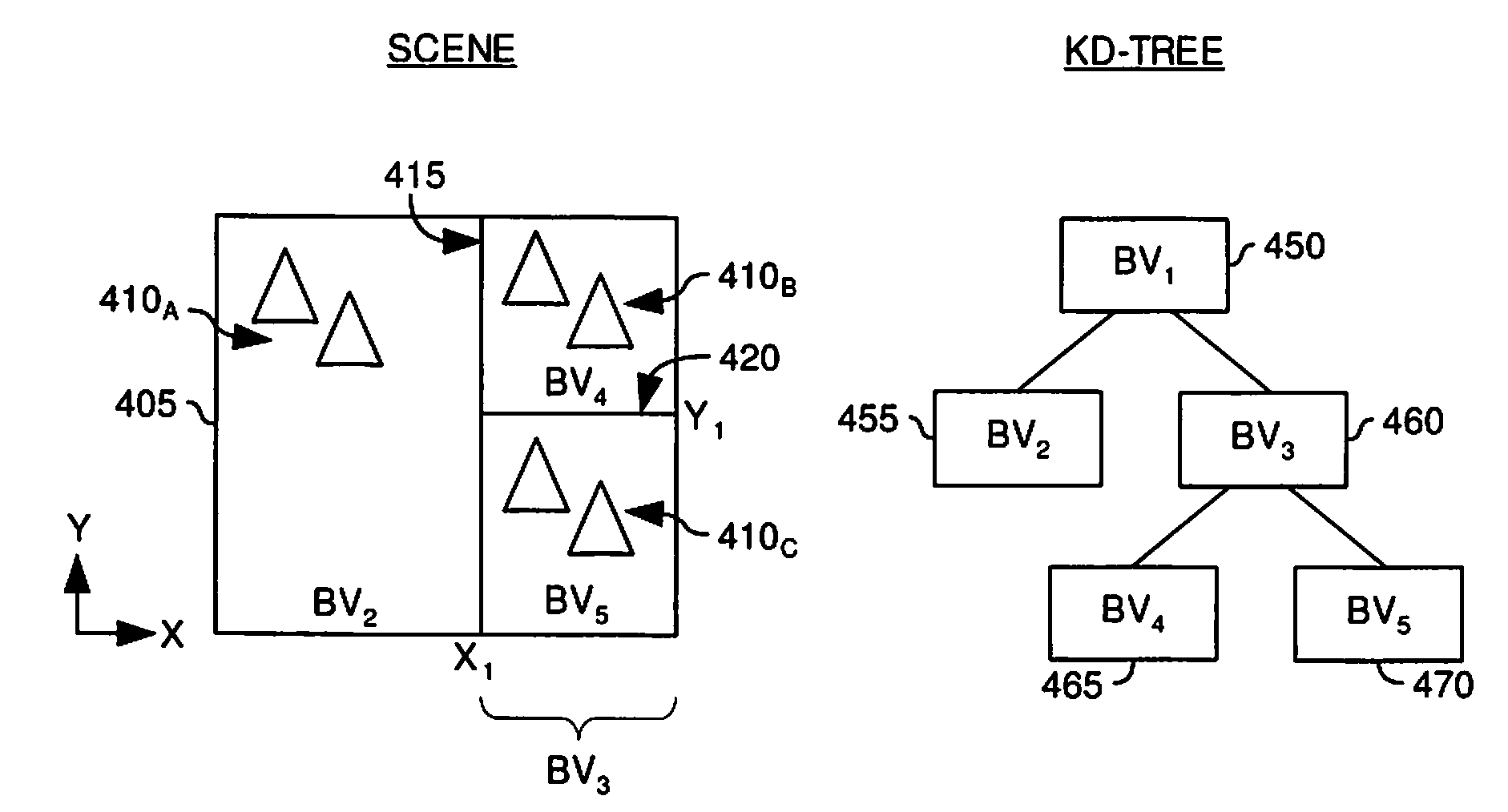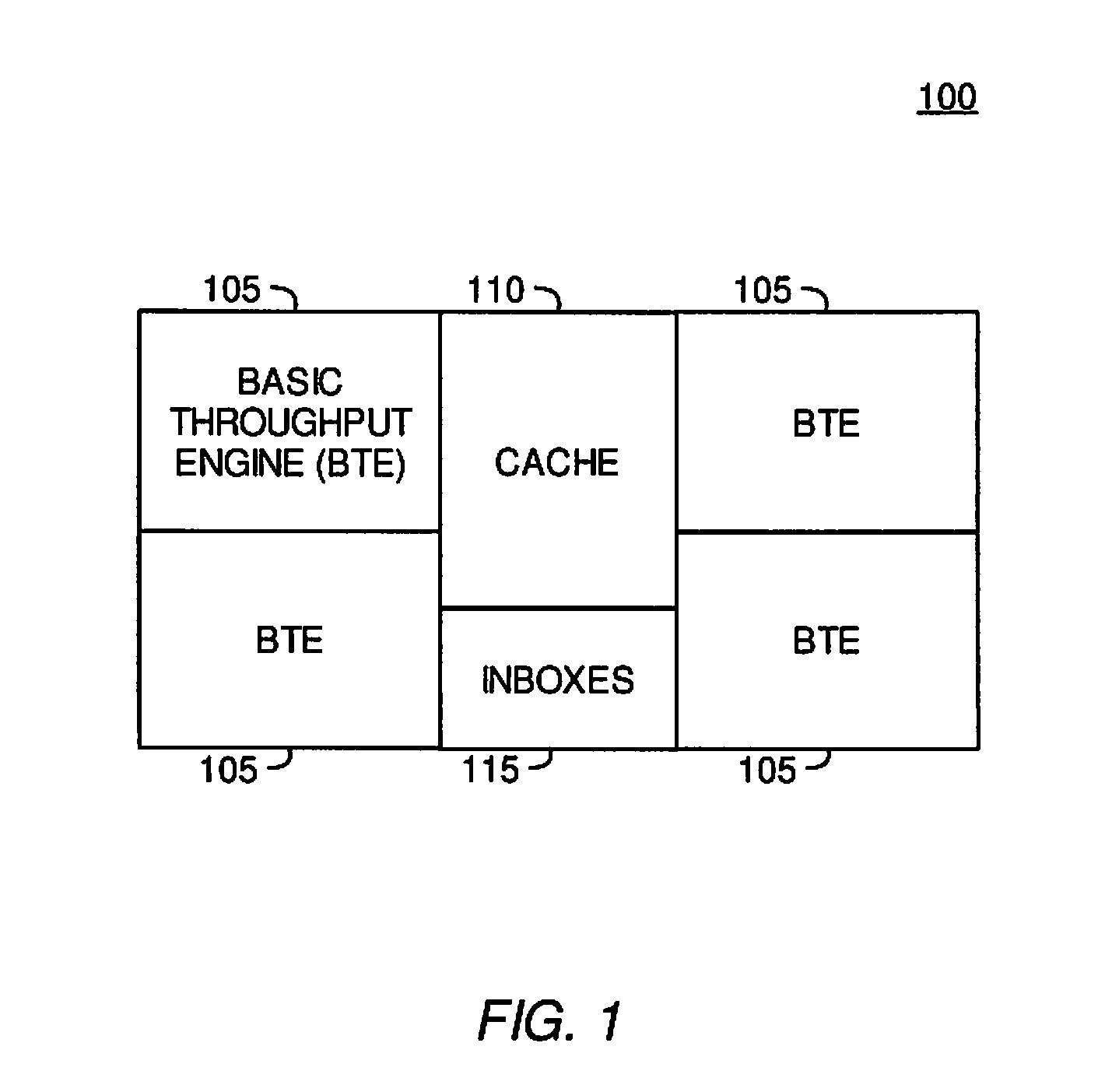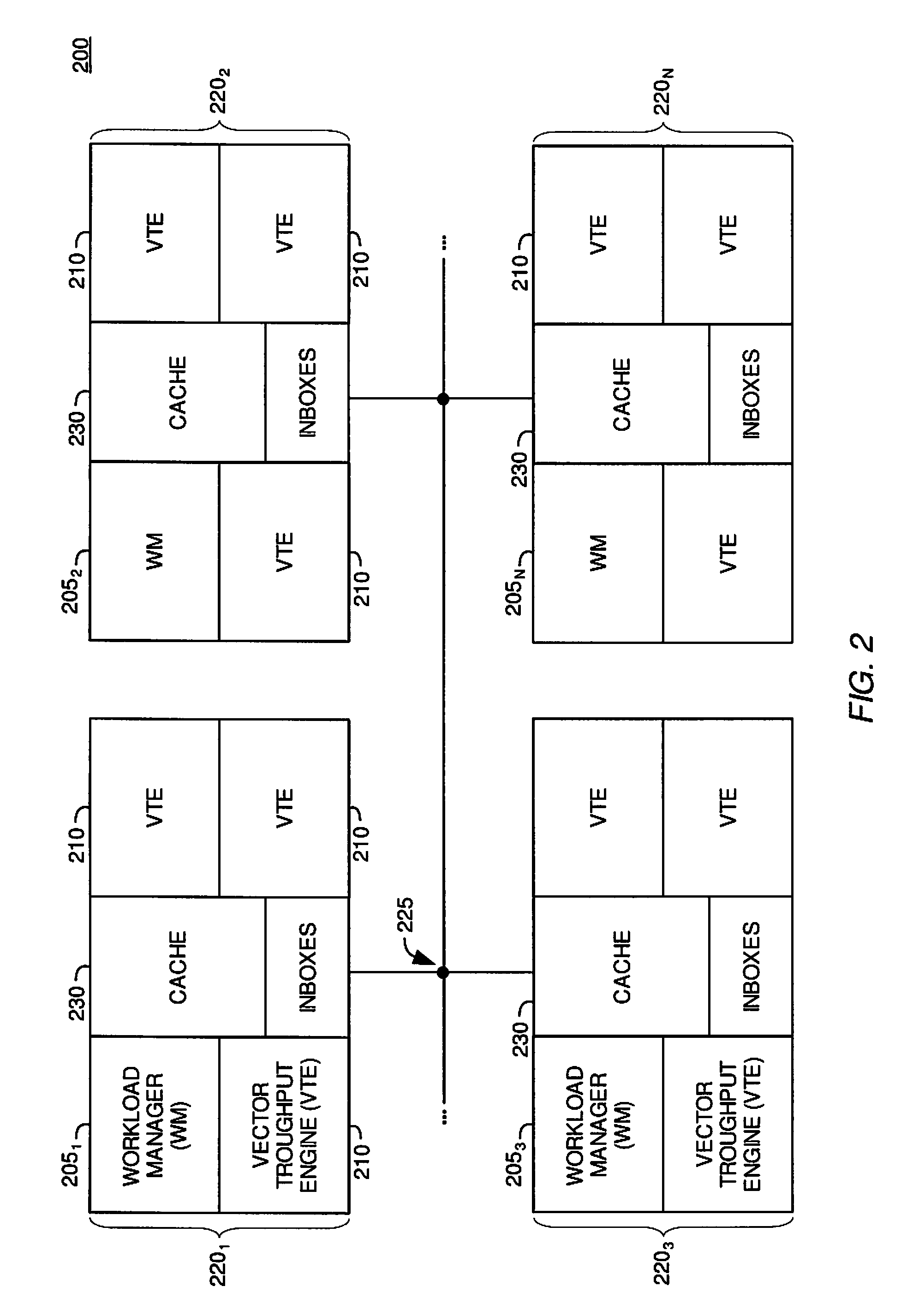Cache Utilization Optimized Ray Traversal Algorithm with Minimized Memory Bandwidth Requirements
a ray traversal algorithm and memory bandwidth technology, applied in the field of image processing, can solve the problems of rasterization suffering from some drawbacks, using relatively low amounts of computational power, and modern monitors display images
- Summary
- Abstract
- Description
- Claims
- Application Information
AI Technical Summary
Benefits of technology
Problems solved by technology
Method used
Image
Examples
Embodiment Construction
[0025]Embodiments of the invention provide techniques and systems for recording the traversal history of a ray through a spatial index structure and utilizing the recorded traversal history of a ray through the spatial index. An image processing system may initially determine which nodes a ray intersects as it traverses through a spatial index. Results of the node intersection determinations may be recorded as the ray traverses the spatial index, and the recorded determinations may be associated with the ray. Furthermore, the image processing system may decide upon a traversal path based upon some probability of striking primitives corresponding to the nodes which make up the spatial index. This traversal path may also be recorded and associated with the ray. If the image processing system needs to re-traverse the spatial index at a later time, the recorded traversal history may be used to eliminate the need to recalculate ray-node intersections, and eliminate incorrect traversal pa...
PUM
 Login to View More
Login to View More Abstract
Description
Claims
Application Information
 Login to View More
Login to View More - R&D
- Intellectual Property
- Life Sciences
- Materials
- Tech Scout
- Unparalleled Data Quality
- Higher Quality Content
- 60% Fewer Hallucinations
Browse by: Latest US Patents, China's latest patents, Technical Efficacy Thesaurus, Application Domain, Technology Topic, Popular Technical Reports.
© 2025 PatSnap. All rights reserved.Legal|Privacy policy|Modern Slavery Act Transparency Statement|Sitemap|About US| Contact US: help@patsnap.com



